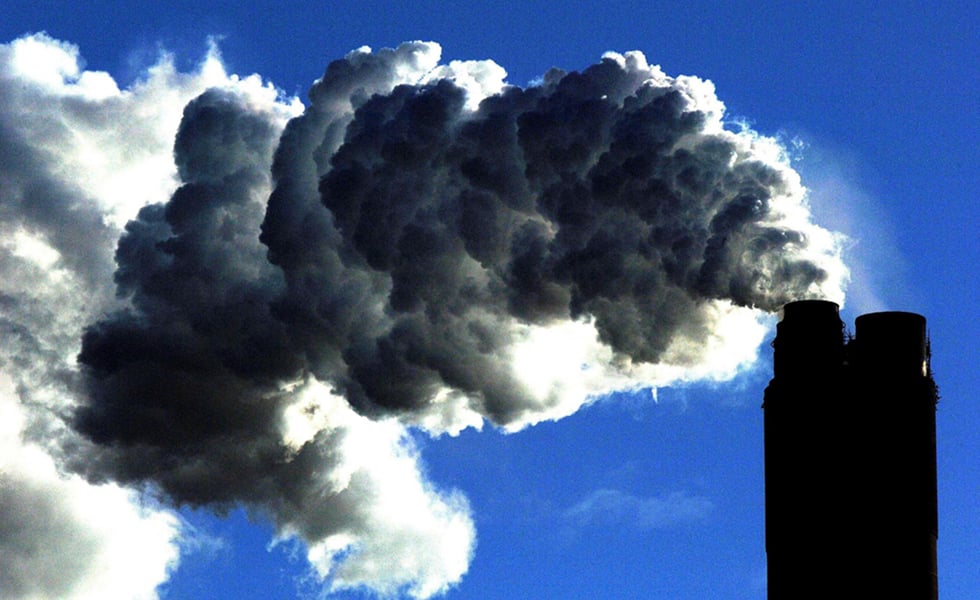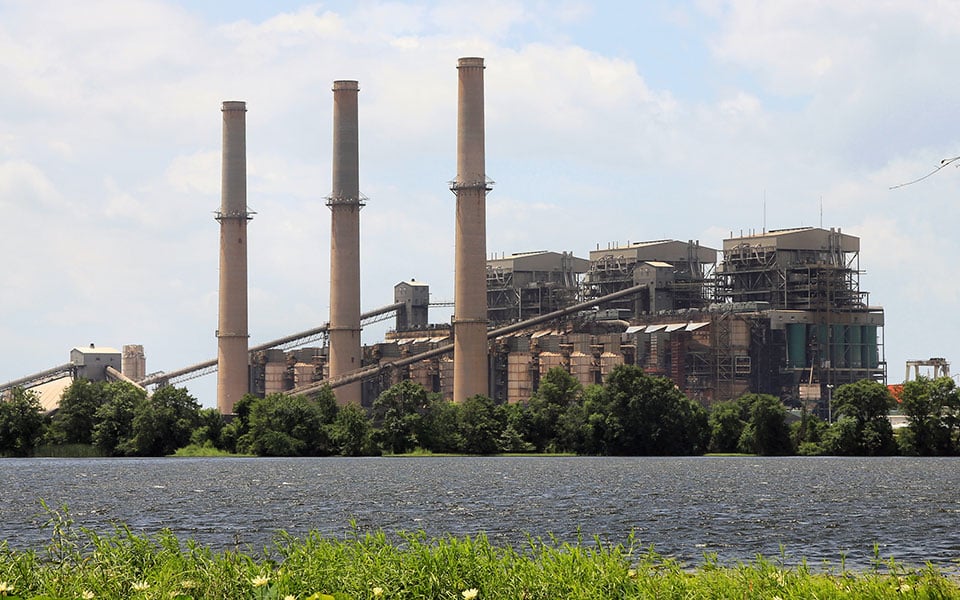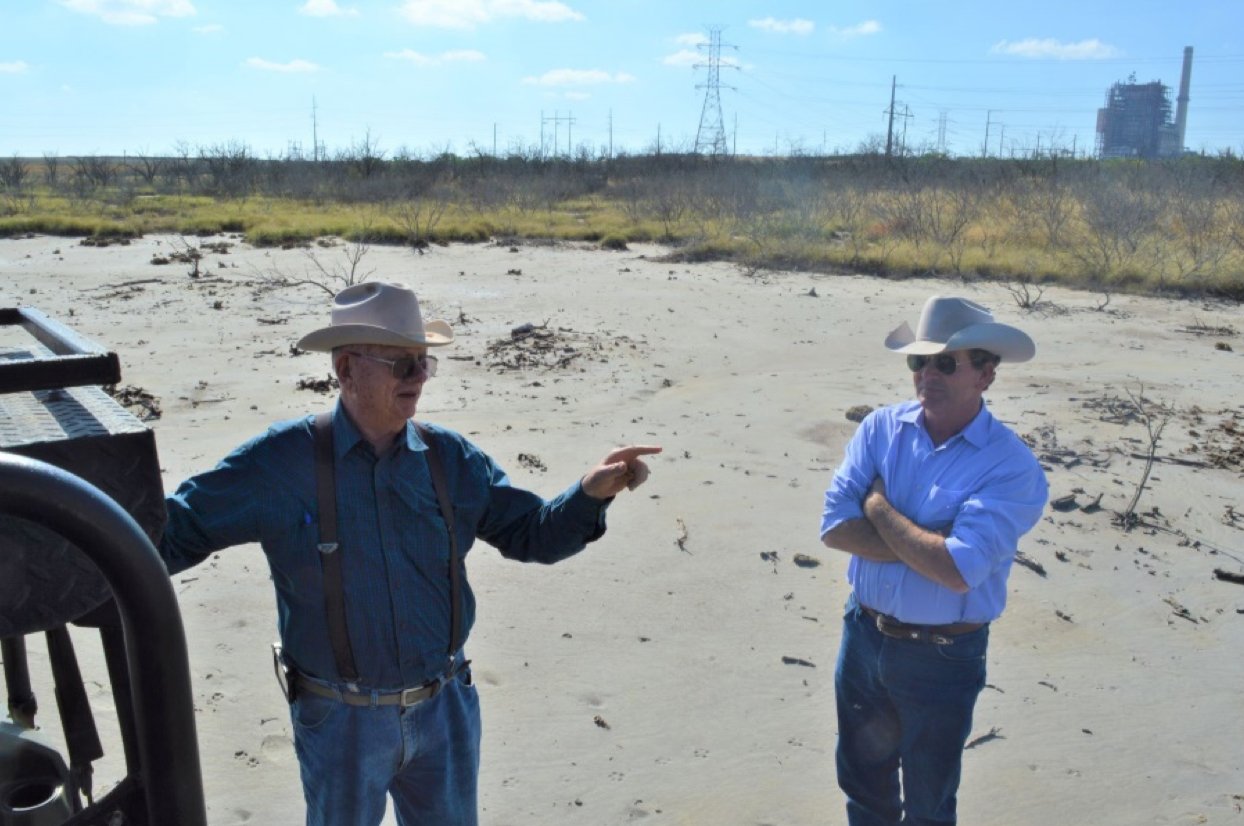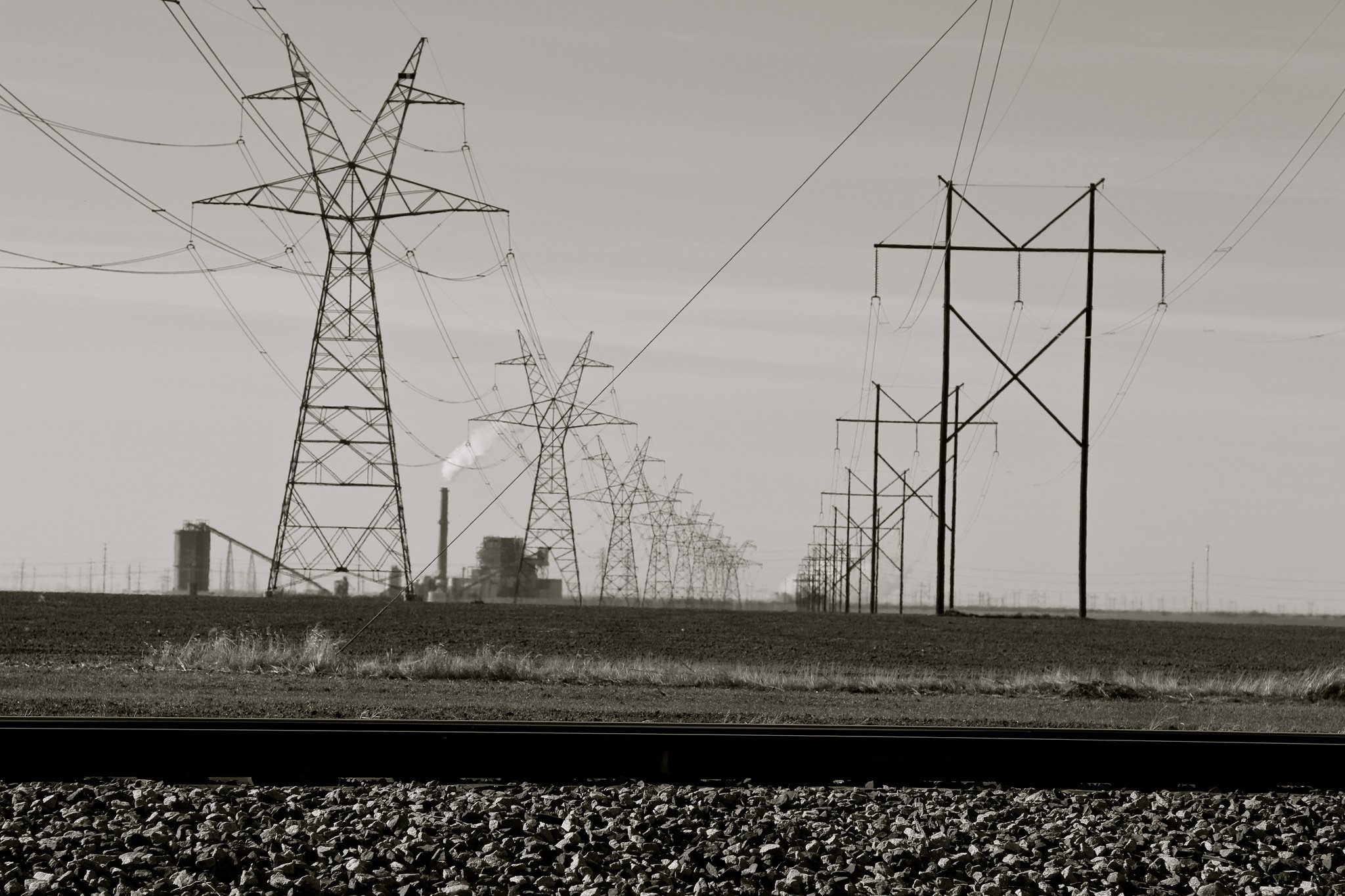
With Coal Plants Offline, the Air in Central and East Texas Has Cleared
After three plants shut down in late 2017, legal air pollution in Texas fell by 150,000 tons.

Residents in rural parts of East and Central Texas can breathe a little easier.
State data shows that the closure of three coal-burning power plants in late 2017 kept more than 150,000 tons of dangerous, smog-forming air pollutants from entering the atmosphere in the following year. One environmental advocate called the change a “vindication” of years of advocacy work to bring public attention to industrial pollution.
In January, the Texas Commission on Environment Quality (TCEQ) released its annual Point Source Emissions Inventory for 2018, an accounting of legal air pollution emitted by coal-burning power plants, refineries, chemical manufacturers, and other polluters. The report showed that Texas polluters emitted 152,000 fewer tons of carbon monoxide, particulate matter, sulfur dioxide, and other pollutants in 2018 than 2017. Adrian Shelley, the executive director of Public Citizen’s Texas chapter, analyzed the data and attributes the reductions to the closure of three plants owned by the coal mining company Luminant: Big Brown in Fairfield, southeast of Dallas; Monticello in Mount Pleasant, east of Dallas; and Sandow in Rockdale, east of Austin.
“We have campaigned to close these coal plants for a really long time,” Shelley said. “Closing coal plants is an excellent way to reduce pollution.”
The biggest drop was sulfur dioxide, which reported emissions of 282,000 tons in 2018—a 25 percent reduction from the previous year. Sulfur dioxide interacts with other compounds in the atmosphere to form small particles that “may penetrate deeply into the lungs and in sufficient quantity can contribute to health problems,” according to the Environmental Protection Agency. Children and the elderly are especially susceptible. Carbon monoxide, an odorless gas that can cause headaches, dizziness, and vomiting, dropped by 15 percent from the previous year, the data shows. Particulate matter, which can cause asthma, an irregular heartbeat, and difficulty breathing, was reduced by 11 percent.
The coal market has slumped so severely that not a single new coal plant has been proposed in the entire nation.
Advocates’ efforts to oppose new coal plants in Texas, along with shifting market forces that have increasingly favored renewables and natural gas over coal, paved the way for the plant closures, Shelley said. Chrissy Mann, who manages the Sierra Club’s “Beyond Coal” campaign in Texas, said the current crop of advocacy work has its roots in the last Texas coal rush in 2005, when electric utility TXU (now Vistra Energy) proposed building 11 new coal-burning power plants across the state. Governor Rick Perry loved the plan—TXU had donated $200,000 to his reelection campaign—and helped push it along, ordering regulators to fast-track environmental reviews. The Sierra Club, Public Citizen, and other advocacy organizations mobilized neighborhood groups in opposition. Laura Miller, then mayor of Dallas, roped big city governments, school boards, and other entities into the fight, creating a diverse coalition of college students, ranchers, environmentalists, and business-savvy Republicans to contest coal’s expansion in Texas. Inside a packed auditorium in Waco in 2007, Miller referred to the fight as “a great battle that will decide the quality of the air we breathe for the next 40 years.”
Meanwhile, wind power was becoming more widespread and efficient. Today it accounts for 17 percent of Texas’ electric grid capacity. Seemingly limitless supplies of natural gas were also being discovered in the Permian Basin underneath West Texas and New Mexico, further eroding coal’s market position. Eventually, only three of the 11 proposed plants were built. Now the coal market has slumped so severely that not a single new coal plant has been proposed in the entire nation.
“A whole new coalition of people who had never worked together before were working together to fight the proliferation of a new generation of coal plants,” Mann said. “I guess in the end we actually did [coal plant operators] a big favor—if they had built them, they would have been underwater.”
Mann called the 2018 pollution reductions “a win for Texas,” but said state regulators could still take steps to further clean the air. After all, the annual survey doesn’t take into account the massive volume of illegal air pollution that goes unpunished in the state. In 2018, unauthorized air pollution in Texas exploded from the year before, totaling 135 million pounds. That’s more than double the 63 million pounds reported in 2017. In almost every case of illegal emissions, companies have claimed that pollution was part of a “start-up, shutdown, or malfunction” event at a facility, a loophole that’s been exploited by Texas companies for years. TCEQ gives polluters who claim such circumstances a free pass 97 percent of the time.
For example, in the Permian Basin of West Texas, illegal emissions of sulfur dioxide are likely pushing pollution levels past limits set by the federal Clean Air Act. In Ward County alone, where drillers are harvesting at a breakneck pace, petroleum-related facilities reported releasing 8.2 million pounds of sulfur dioxide during start-up, shutdown, or malfunction events. Much of that pollution appears to be the byproduct of flaring, a common process in which operators burn usable natural gas they’ve unearthed but don’t have the capacity to store. TCEQ’s reluctance to punish polluters in those cases is “absurd,” Shelley said.

Even with the retirement of Monticello and Big Brown, the skies of East Texas are still clouded by the Martin Creek Lake Steam Electric Station in Tatum, 30 minutes southeast of Longview. The coal-burning power plant annually releases 25,400 tons of sulfur dioxide—the most of any plant in the United States—and is responsible for 100 premature deaths each year, according to a Sierra Club analysis. The plant has thus far defied the market headwinds and advocacy efforts that have pushed others into retirement.
The 2018 emissions data also points to a troubling trend. While legal air pollution decreased overall, emissions from other industries ticked up in 2018—namely in the petroleum, natural gas, and chemical sectors. The liquified natural gas industry reported modest upticks in its emissions of fine particulate matter emissions from 2017; the crude petroleum and natural gas industries saw increases of carbon monoxide, fine particulate matter, and sulfur dioxide; and the industrial organic chemicals sector, which includes solvents and other miscellaneous chemicals, also reported increased emissions of those same pollutants.
Air pollution from those industries is likely to worsen in the future, as an industrial buildout grips the Texas Gulf Coast from Brownsville to Beaumont. A massive new ethane cracker will be online in Corpus Christi by 2020. Oil refiner Motiva Enterprises is pouring $6.6 billion into a project to expand its operations in Port Arthur. And more projects are on the way. All told, new emissions from the buildout could far outpace those of the state’s coal-fired power plants by 2030. The new developments could create pollution equivalent to that of 11 coal plants.
“That has to be a serious thing our leaders and agencies take on. People along the coast have been harmed by this industry for a long time,” Mann said. “It’s time to redouble our efforts.”
Read more from the Observer:
-
Alec Karakatsanis on the ‘Usual Cruelty’ of the Criminal Justice System: In his book, Karakatsanis argues that lawyers and judges have become numb to the cruelties of the criminal justice system—and ultimately stand in the way of changing it.
-
1,500 Nueces County Voters Were Wrongly Sent Letters Demanding Proof of ID: A big mistake in the lead up to primary voting underscores the anxiety around misinformation on elections and barriers to voting.
-
It’s Illegal to Take Drone Photos of Cattle Feedlots in Texas. Press Groups Say That Violates the First Amendment: To get a sense of the Panhandle’s network of cattle feedlots, which can cause health problems for those who live around them, you’ve got to see it from above.

